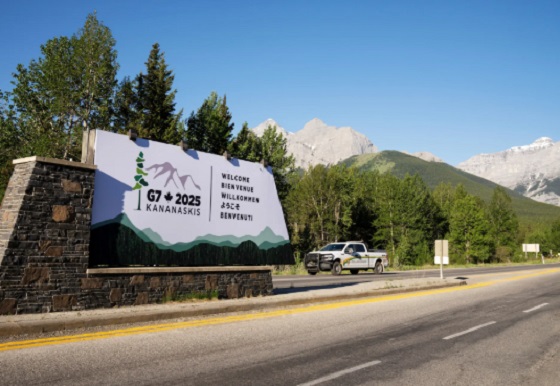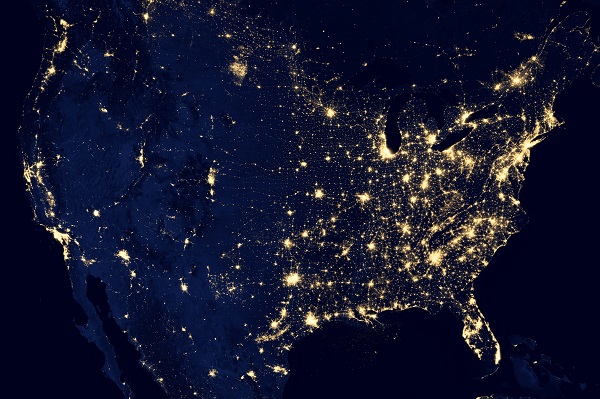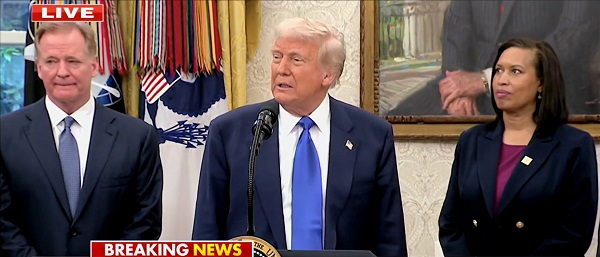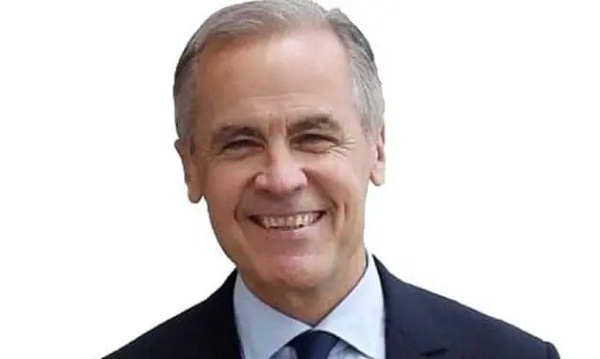Uncategorized
Expert: Comatose woman may not have shown signs of pregnancy

PHOENIX — A doctor examined an Arizona woman in a vegetative state nearly nine months before she gave birth but did not find that she was pregnant, and medical experts said Thursday that it’s possible she displayed no outward signs that workers who cared for her every day would have noticed either.
Police are looking for her rapist and say it appears none of the staff members at a Phoenix long-term care facility knew about the pregnancy until the baby was born Dec. 29, a notion that has drawn skepticism. But the 29-year-old woman, who is described in a medical report as having tubes to feed her and help her breathe, may not have had a swollen belly, according to a doctor of fetal medicine.
While factors remain unknown, such as how far along she was, someone who is fed the same amount from a tube every day might not show any dramatic changes that would be noticed, especially by staffers who don’t work with pregnant patients, said Dr. C. Kevin Huls, a clinical assistant professor and maternal-fetal medicine fellowship director at the University of Arizona College of Medicine-Phoenix.
The mother could actually lose weight in other places like her face or arms if a fetus is consuming nutrients, Huls added.
“A good way to understand it is that really, the baby’s going to continue to grow even at the expense of the mom’s nutrition,” Huls said. “So, her weight may not change because she’s not taking in additional calories. There may be changes to her body that are going to go undetected in a chronic care condition or at a facility like this.”
The revelation that an incapacitated woman was sexually assaulted inside a care facility has horrified advocates for people with disabilities and the community at large. The provider’s CEO resigned this week, and the state said the
A doctor examined the woman on April 16 and found “no change” in her health, writing that the exam was external only, according to Maricopa County Superior Court documents. Her mother submitted the results of the physical as part of an annual report that state law requires of legal guardians.
Phoenix police learned of the situation when they received a call on Dec. 29 about a newborn in distress at the Hacienda HealthCare facility. Officers launched a sex crime investigation when it was determined the mother was in a vegetative state, police spokesman Tommy Thompson said.
“She was not in a position to give consent to any of this,” Thompson said.
The baby and the woman are recovering at an area hospital, and their conditions were not released.
It’s possible the woman won’t have any additional long-term complications from giving birth. Women in a vegetative state after accidents or strokes have successfully delivered babies, Huls said.
Her family, who are members of the San Carlos Apache tribe in southeastern Arizona, said in a statement through their attorney that they will care for the baby boy.
Phoenix police, meanwhile, have not ruled out any suspects in the sexual assault. They are gathering DNA samples from the facility’s male staffers and have appealed to the public for any information.
It remains unclear to investigators if the woman was raped more than once.
“I know at least once she was sexually assaulted, which is way too many times,” Thompson said.
The Hacienda intermediate care facility specializes in providing around-the-clock care for infants, children and young adults with developmental disabilities or who are “medically fragile.”
Since the birth came to light, Hacienda HealthCare has implemented increased safety measures, including more than one staff member being present during patient interactions and more scrutiny of visitors.
The company has said it welcomes DNA testing of its male staffers and is
___
Follow Terry Tang on Twitter at www.twitter.com/ttangAP .
Terry Tang, The Associated Press
Uncategorized
Kananaskis G7 meeting the right setting for U.S. and Canada to reassert energy ties


Energy security, resilience and affordability have long been protected by a continentally integrated energy sector.
The G7 summit in Kananaskis, Alberta, offers a key platform to reassert how North American energy cooperation has made the U.S. and Canada stronger, according to a joint statement from The Heritage Foundation, the foremost American conservative think tank, and MEI, a pan-Canadian research and educational policy organization.
“Energy cooperation between Canada, Mexico and the United States is vital for the Western World’s energy security,” says Diana Furchtgott-Roth, director of the Center for Energy, Climate and Environment and the Herbert and Joyce Morgan Fellow at the Heritage Foundation, and one of America’s most prominent energy experts. “Both President Trump and Prime Minister Carney share energy as a key priority for their respective administrations.
She added, “The G7 should embrace energy abundance by cooperating and committing to a rapid expansion of energy infrastructure. Members should commit to streamlined permitting, including a one-stop shop permitting and environmental review process, to unleash the capital investment necessary to make energy abundance a reality.”
North America’s energy industry is continentally integrated, benefitting from a blend of U.S. light crude oil and Mexican and Canadian heavy crude oil that keeps the continent’s refineries running smoothly.
Each day, Canada exports 2.8 million barrels of oil to the United States.
These get refined into gasoline, diesel and other higher value-added products that furnish the U.S. market with reliable and affordable energy, as well as exported to other countries, including some 780,000 barrels per day of finished products that get exported to Canada and 1.08 million barrels per day to Mexico.
A similar situation occurs with natural gas, where Canada ships 8.7 billion cubic feet of natural gas per day to the United States through a continental network of pipelines.
This gets consumed by U.S. households, as well as transformed into liquefied natural gas products, of which the United States exports 11.5 billion cubic feet per day, mostly from ports in Louisiana, Texas and Maryland.
“The abundance and complementarity of Canada and the United States’ energy resources have made both nations more prosperous and more secure in their supply,” says Daniel Dufort, president and CEO of the MEI. “Both countries stand to reduce dependence on Chinese and Russian energy by expanding their pipeline networks – the United States to the East and Canada to the West – to supply their European and Asian allies in an increasingly turbulent world.”
Under this scenario, Europe would buy more high-value light oil from the U.S., whose domestic needs would be back-stopped by lower-priced heavy oil imports from Canada, whereas Asia would consume more LNG from Canada, diminishing China and Russia’s economic and strategic leverage over it.
* * *
The MEI is an independent public policy think tank with offices in Montreal, Ottawa, and Calgary. Through its publications, media appearances, and advisory services to policymakers, the MEI stimulates public policy debate and reforms based on sound economics and entrepreneurship.
As the nation’s largest, most broadly supported conservative research and educational institution, The Heritage Foundation has been leading the American conservative movement since our founding in 1973. The Heritage Foundation reaches more than 10 million members, advocates, and concerned Americans every day with information on critical issues facing America.
Uncategorized
Poilievre on 2025 Election Interference – Carney sill hasn’t fired Liberal MP in Chinese election interference scandal

From Conservative Party Communications
“Yes. He must be disqualified. I find it incredible that Mark Carney would allow someone to run for his party that called for a Canadian citizen to be handed over to a foreign government on a bounty, a foreign government that would almost certainly execute that Canadian citizen.
“Think about that for a second. We have a Liberal MP saying that a Canadian citizen should be handed over to a foreign dictatorship to get a bounty so that that citizen could be murdered. And Mark Carney says he should stay on as a candidate. What does that say about whether Mark Carney would protect Canadians?
“Mark Carney is deeply conflicted. Just in November, he went to Beijing and secured a quarter-billion-dollar loan for his company from a state-owned Chinese bank. He’s deeply compromised, and he will never stand up for Canada against any foreign regime. It is another reason why Mr. Carney must show us all his assets, all the money he owes, all the money that his companies owe to foreign hostile regimes. And this story might not be entirely the story of the bounty, and a Liberal MP calling for a Canadian to be handed over for execution to a foreign government might not be something that the everyday Canadian can relate to because it’s so outrageous. But I ask you this, if Mark Carney would allow his Liberal MP to make a comment like this, when would he ever protect Canada or Canadians against foreign hostility?
“He has never put Canada first, and that’s why we cannot have a fourth Liberal term. After the Lost Liberal Decade, our country is a playground for foreign interference. Our economy is weaker than ever before. Our people more divided. We need a change to put Canada first with a new government that will stand up for the security and economy of our citizens and take back control of our destiny. Let’s bring it home.”
-

 International2 days ago
International2 days agoChicago suburb purchases childhood home of Pope Leo XIV
-

 Daily Caller2 days ago
Daily Caller2 days agoBlackouts Coming If America Continues With Biden-Era Green Frenzy, Trump Admin Warns
-

 Daily Caller2 days ago
Daily Caller2 days ago‘I Know How These People Operate’: Fmr CIA Officer Calls BS On FBI’s New Epstein Intel
-

 National1 day ago
National1 day agoLiberal ‘Project Fear’ A Longer Con
-

 Censorship Industrial Complex24 hours ago
Censorship Industrial Complex24 hours agoCanadian pro-freedom group sounds alarm over Liberal plans to revive internet censorship bill
-

 Crime23 hours ago
Crime23 hours agoTrump supporters cry foul after DOJ memo buries the Epstein sex trafficking scandal
-

 Daily Caller23 hours ago
Daily Caller23 hours agoTrump Issues Order To End Green Energy Gravy Train, Cites National Security
-

 Daily Caller16 hours ago
Daily Caller16 hours agoUSAID Quietly Sent Thousands Of Viruses To Chinese Military-Linked Biolab






